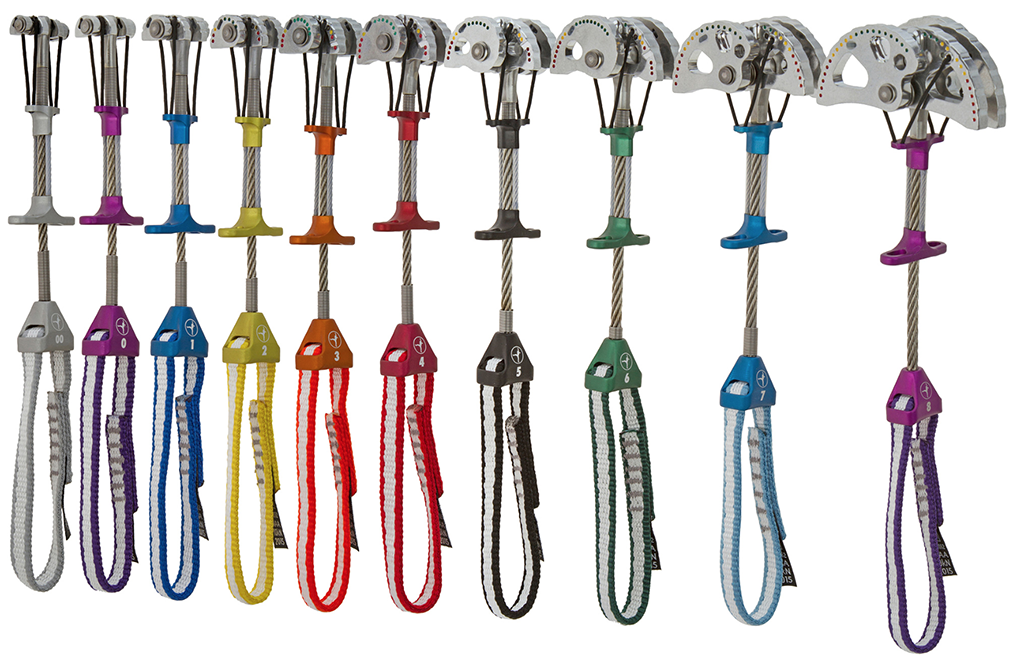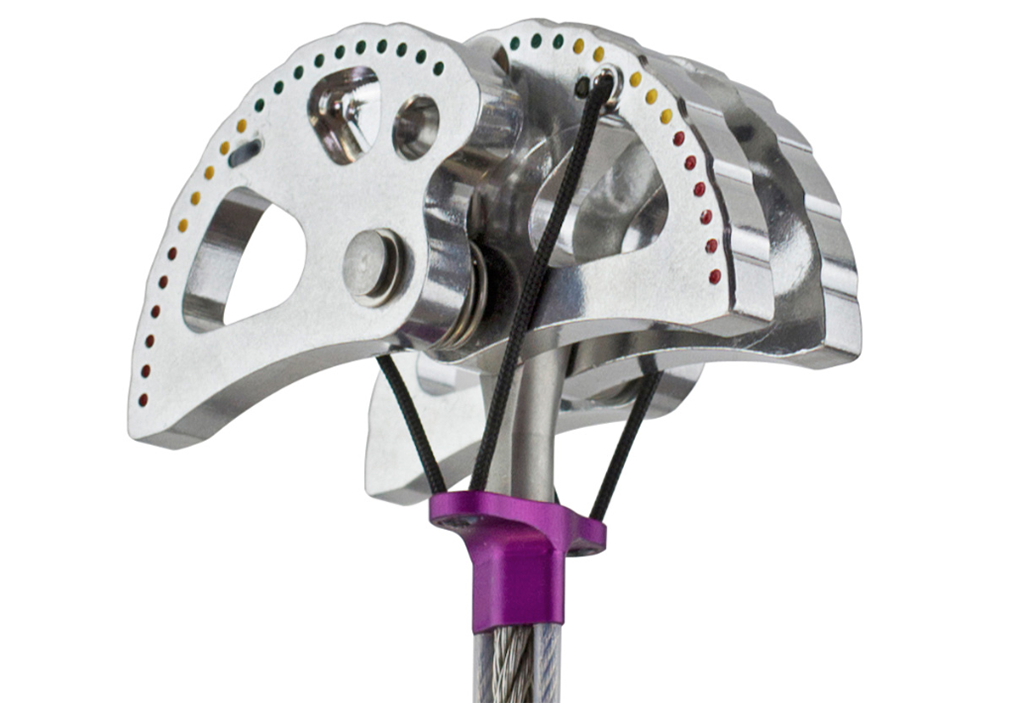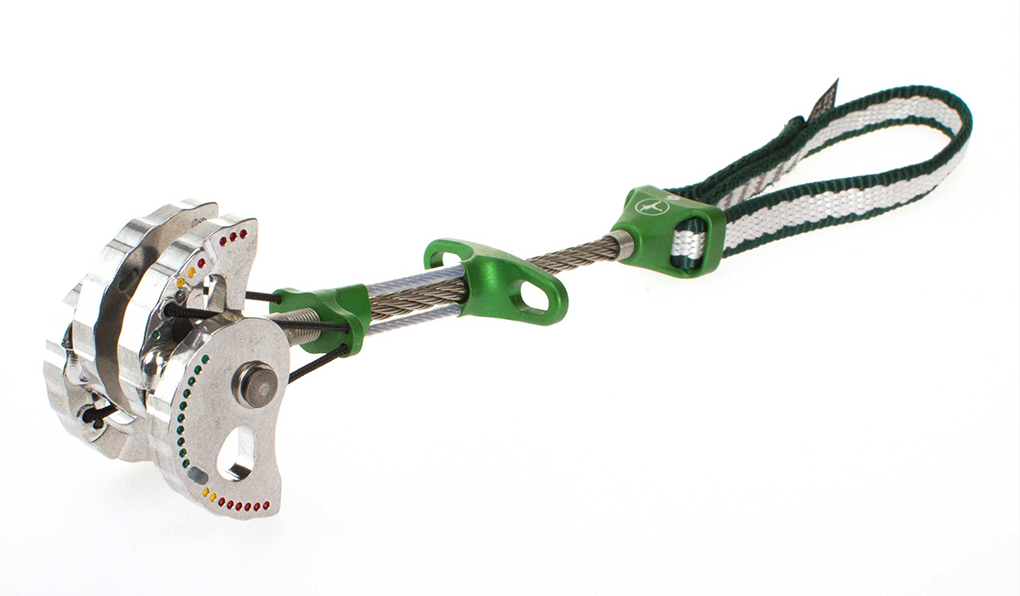
Metolius Ultralight Master Cam
Size Tested: 5, 6, and 7 (Black, Green, Blue)
Available Sizes: 10 sizes: #00 – 8
Stated Features:
- Slings are replaceable, and should be replaced every five years or earlier
- Color-coded 11 mm Monster sling, thumb piece and trigger
- Range Finder system assists you in choosing the correct size cam
- CNC machined for much greater precision than stamped or extruded cams
- CE/UIAA certified
- 100% made in the USA
- Individually proof tested
MSRP: $59.95-$64.95
Days Tested: 12
Test Locations: Eldorado Springs, Boulder Canyon, Black Canyon N.P., CO; Vedauwoo, WY, Joshua Tree, CA
Intro
2016 promises to be a big year for climbing hardware, with Black Diamond, Metolius, DMM, and Wild Country all rebooting their hallmark cams. As the season ramps up, we’ll be taking a look at each of them, beginning with the redesigned Metolius Ultralight Master Cam.
The latest generation of Master Cams loses some weight to the tune of a stated savings of roughly 20% as an average across the entire line.
New Features
A quick glance at the cam reveals that almost every noteworthy gram-shedding update is in the stem of the cam. The head is virtually unchanged except for new texture (or tread) on the lobes, giving them more of a layered, seashell-like surface rather than the gear-like notches of the previous iteration.

Metolius claims that this new tread will bolster holding power in softer rock since the intended function of the new lobe shape is to push away debris so that the lobes can directly engage the solid rock beneath. It’s an interesting idea, and the engineer in me would love to see data that supports this. On the rock, I can’t claim (yet) to have noticed a difference using the Master Cam even on softer sandstone like that found in Zion or Moab.
Also, in an upgrade from the original Master Cam, Metolius made the stem stiffer by employing a beefier cable so that the larger sizes have greater stability when placed. Presumably this made it possible to include the two new larger sizes, the 7 and 8 (both hand-sized pieces), in this new line.

Another small design flourish that make the Ultralight Master Cam seem well thought out is that the outside end of the trigger mechanism that interfaces with the cable is extended further from the lobes in the smaller sizes (#3 / orange and smaller) so as to keep the trigger from jamming against the walls of the crack and fixing the cam.
To Thumb Loop or Not To Thumb Loop
The more crucial alterations begin at the stem; the new Master Cam uses a thicker gauge cable that terminates in the center of a small thumb piece instead of the off-center sleeve of the original Master Cam.
The real difference, however, is the adoption of a small, pyramidal thumb piece that connects the stem and sling rather than the near-ubiquitous thumb loop used in not only the original Master Cam, but in Black Diamond (C4) and Wild Country (Helium Friends) cams. This brings the Ultralight Master Cam more in line with the DMM Dragon or Demon.

I was genuinely surprised by this at first. Removing the thumb loop (one of the most-loved features of modern cams) in order to save weight and size seemed like a gamble. And for many climbers, how you feel about thumb loops will be the deciding factor in your verdict on the Master Cam.
After using them for some time, I’ve got mixed feelings about the lack of thumb loops. Thumb loops simply make it quicker to transfer a cam from your harness to the wall with precision. I’m not a zealot in my refusal to use cams that don’t have thumb loops—it’s not a deal breaker for me. But I definitely notice the difference in speed when using cams without thumb loops, especially in those seconds that are stretched out by the feeling of desperation on a hard route.
Additionally, for the small niche of aid climbers, the lack of a thumb loop means that you’ll be clipping your aiders a few inches lower than you would with a comparably-sized C4.
NEXT: Weight Savings, Who’s it for? Etc.
